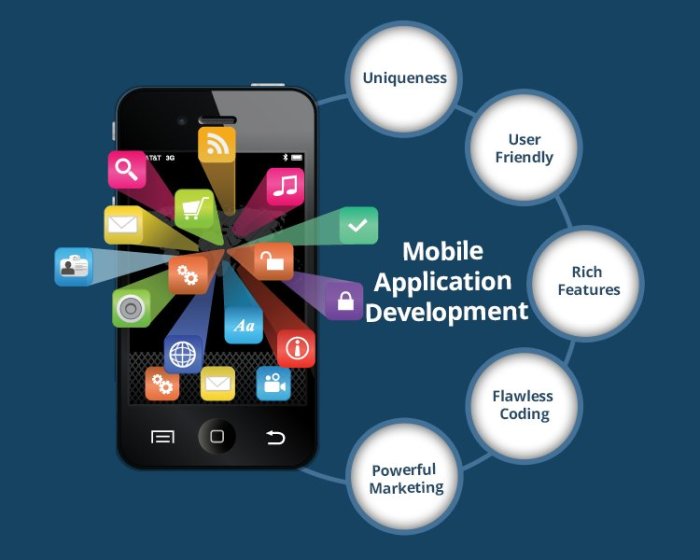Developing Content for Mobile Users dives into the importance of optimizing for mobile, creating user-friendly content, implementing strategies, and engaging your mobile audience with interactive experiences. Get ready to level up your mobile game!
Importance of Mobile Optimization

In today’s digital landscape, optimizing content for mobile users is absolutely crucial. With the increasing use of smartphones and tablets, more and more people are accessing the internet on mobile devices rather than traditional desktop computers. This shift in user behavior means that businesses and content creators need to prioritize mobile optimization to ensure a seamless and enjoyable user experience.
Mobile Usage Statistics
- Over 50% of web traffic comes from mobile devices.
- 70% of all digital media time is spent on mobile devices.
- Mobile searches have surpassed desktop searches on Google.
User Experience Differences
When it comes to user experience, mobile devices present unique challenges compared to desktops. Mobile screens are smaller, touch interfaces require different interactions, and connection speeds can vary. Content that is not optimized for mobile can lead to slow loading times, difficult navigation, and a frustrating user experience. By ensuring that your content is mobile-friendly, you can engage with a wider audience and provide a positive experience for all users.
Creating Mobile-Friendly Content
In today’s digital age, having a mobile-friendly website is crucial to reach a wider audience and provide a seamless user experience. Here are some tips to help you design responsive web pages that adapt well to various screen sizes and optimize your content for mobile users.
Designing Responsive Web Pages
Creating a responsive website involves using flexible grids and layouts that can adjust to different screen sizes. Make sure your website is mobile-responsive by using CSS media queries to set breakpoints for different screen sizes. This will ensure that your content looks good and functions properly on smartphones, tablets, and other mobile devices.
- Use a mobile-first approach when designing your website, focusing on the needs of mobile users first before desktop users.
- Keep your design simple and clean to enhance readability and navigation on smaller screens.
- Avoid using large images or complex layouts that may slow down your website’s loading time on mobile devices.
Importance of Fast Loading Times
Mobile users expect fast-loading websites, and a delay of just a few seconds can lead to high bounce rates. To optimize your mobile content for speed, consider the following:
- Compress images and videos to reduce file sizes without compromising quality.
- Minimize the use of plugins and scripts that can slow down your website’s loading time.
- Enable browser caching and utilize content delivery networks (CDNs) to speed up content delivery to users.
Optimizing Images and Videos
Images and videos play a crucial role in engaging mobile users, but they can also impact your website’s performance if not optimized properly. Follow these best practices to ensure a seamless mobile viewing experience:
- Use responsive images that can adapt to different screen sizes without losing quality.
- Optimize image file formats (such as JPEG or WebP) and sizes to reduce loading times.
- Lazy load images and videos to prioritize the loading of essential content first and improve page speed.
Mobile Strategies
When it comes to mobile , it’s a whole different ball game compared to traditional practices. With the increasing number of mobile users, optimizing your content for mobile devices is crucial for reaching a wider audience and improving your search rankings.
Importance of Local for Mobile Users
Local is especially important for mobile users who are often on the go and looking for quick and relevant information based on their current location. By optimizing your content for local searches, you can attract nearby customers and increase your visibility in local search results.
- Include local s in your content to target users searching for businesses or services in their area.
- Create a Google My Business profile to ensure your business appears in local searches and on Google Maps.
- Encourage customers to leave reviews and ratings, as positive feedback can boost your local search rankings.
- Optimize your website for mobile devices to provide a seamless user experience for mobile users.
Engaging Mobile Users: Developing Content For Mobile Users

Engaging mobile users is crucial for the success of any mobile marketing campaign. By creating interactive content that resonates well with mobile users, businesses can capture their attention and keep them engaged. In addition, utilizing push notifications and in-app messaging can further enhance user engagement and drive conversions. Let’s explore some effective strategies to engage mobile users.
Interactive Content Ideas, Developing Content for Mobile Users
Creating interactive content such as quizzes, polls, and surveys can be a great way to engage mobile users. These interactive elements not only capture their attention but also encourage active participation, leading to increased user engagement and brand loyalty.
Push Notifications and In-App Messaging
Push notifications and in-app messaging are powerful tools to engage mobile users in real-time. By sending personalized messages, promotions, and updates directly to their devices, businesses can keep users informed and engaged. These notifications can drive traffic to the app or website, boost sales, and improve overall user experience.
Successful Mobile Marketing Campaigns
One successful example of engaging mobile users is Starbucks’ mobile app. The app allows users to order ahead, earn rewards, and receive personalized offers based on their preferences. By leveraging push notifications and in-app messaging, Starbucks effectively engages its audience and drives customer loyalty.Another example is the mobile game “Pokemon Go,” which used location-based augmented reality to engage users and create a viral sensation.
The game encouraged players to explore their surroundings, interact with other players, and participate in events, resulting in high user engagement and retention rates.By implementing interactive content, push notifications, and in-app messaging, businesses can create engaging mobile experiences that resonate well with users and drive success in their mobile marketing efforts.
